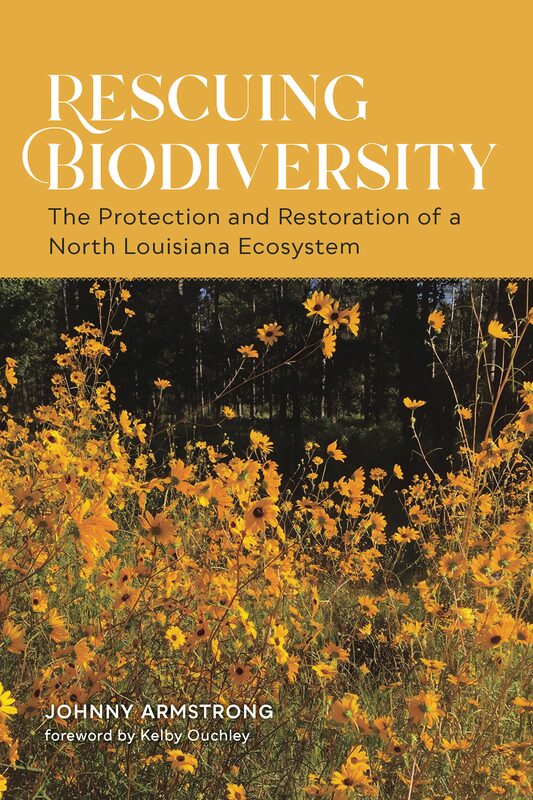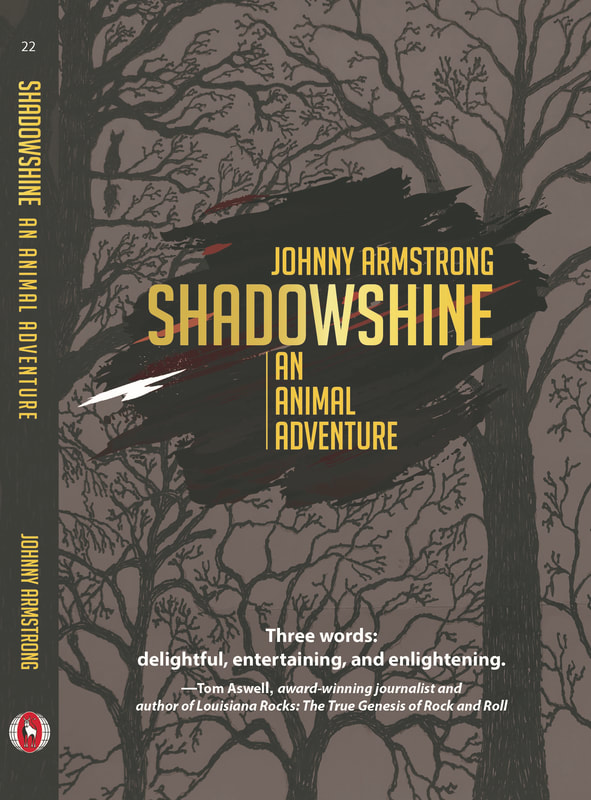|
by Johnny Armstrong, Earth Day 2019 As we enter the time of radical negative impact from the effects of global warming, we must clearly recognize an additional looming menace just as ominous. The ever-increasing rate of global destruction of species and ecosystems is a grave threat of planetary scale. The problem is well described by world preeminent biologist and two-time Pulitzer Prize winner, E. O. Wilson: “The on-going mass extinction of species, and with it, the extinction of genes and ecosystems, ranks with pandemics, world war and climate change as among the deadliest threats that humanity has imposed on itself.” According to a 2016 report from the U.S. Geological Survey, amphibians in the United States alone are facing an annual 4% decline. The causes include introduced disease such as the chytrid fungus, pollution, wetland loss and invasive non-native species. If this decline continues unchecked, in 25 years we will be hearing far fewer frogs and toads at night, and a pillar of aquatic freshwater ecosystems will be on the brink of destruction. Butterflies are in broad decline with several known extinctions in the recent past. Forty species of moth and butterfly are presently listed under the Endangered Species Act. Losses are mainly attributed to habitat destruction, pesticides and global warming. –National Wildlife Federation. There are about 4000 native bee species in North America and fifty of those are bumble bee species, our most important native pollinators. But bumble bees are in peril and declining, and causes include habitat loss, climate change, disease, and pesticides, particularly the neonicotinoid insecticides. According to the National Audubon Society’s recently published seven year study: Of the 588 regularly occurring bird species in North America (north of Mexico), 314 are imperiled, and 126 of those species are on the road to extinction—all, largely due to habitat loss and global warming. If this is not the “canary-in-the-coal-mine,” I don’t know what is. Over the last century, 57 freshwater fish in North America went extinct due to human activity – causes include habitat destructive damming of rivers and streams, springhead filling and destruction, pollution, and draining of natural ponds and lakes. According to the American Fisheries Society, 40% of freshwater fish species in North America are imperiled or already extinct. Three billion people, nearly half of the world population, depend on fish as a protein source. Yet around 85% of commercially harvested marine fishing stocks are at their breaking point due to over-harvesting. – Maria Damanaki, Global Managing Director for Oceans, The Nature Conservancy; and former European Union Commissioner for Maritime Affairs and Fisheries. Coral reef ecosystems are imperiled and declining due to warming ocean temperature and ocean acidification caused by absorption of increased atmospheric CO2 largely caused by human activity. Of 302 known species of mussel in North America, 26 are extinct, another 87 species are federally listed as endangered or threatened. The cause is primarily due to water pollution. – National Wildlife Federation. Finally, plant diversity is in rapid global decline, largely due to habitat destruction and global warming. The facts I’ve just outlined represent only a fraction of our global threat and most of it represents North America or the United States alone, only a relatively small patch on the surface of Earth. But with biodiversity, as with real estate, location means everything. Only five percent of the Earth’s land surface encompasses tropical rainforest zones, yet tropical rainforests are the home to greater than 50% of the entire biodiversity of Planet Earth. Ironically, the tropical rainforests are being systematically destroyed, permanently extinguishing millions of yet unidentified species of animals and plants. The better the economy and technology, the faster the destruction. Everywhere. Not just in rainforests. According to the World Wildlife Fund’s Living Planet Report 2016, global wildlife populations fell by about 60% between 1970 and 2012, and predicted a greater than 70% loss by 2020. WWF further says, “We’ve entered a mass extinction event—only the sixth in Earth’s history. Our planet may now be losing species faster than during the Chicxulub asteroid strike that wiped out the dinosaurs 66 million years ago. This time the culprit is us.” The National Geographic Society made this statement in 2019: “The scale of the mass extinction crisis sweeping across our planet is staggering: Around 150 to 200 plant and animal species will disappear today alone. We must save as much of Earth’s remaining life as possible—and make no mistake, we are in a desperate race against time.” To be fair, estimates of the extinction numbers are very difficult to make with accuracy because we don’t know how many species are yet to be documented. And estimates for that number run from 10 million to 100 million and more. So let’s say Nat Geo’s estimate is too high at a 150 species loss per day. And it’s really just 25 per day. Twenty-five species per day would mean an extinction loss of close to 10,000 species per year, and close to 100,000 in 10 years and nearly 200,000 in 20 years—shocking enough!—but, if Nat Geo is correct at 150 species winking out daily, that would mean one million species lost forever in just 20 years. And now we begin to really see how the comparison with the Chicxulub event that wiped out the dinosaurs can be made. Biologists have coined a convenient acronym for the causes of biodiversity destruction. In decreasing rank of importance, it is HIPPO, where “H” stands for habitat destruction and global warming. “I” stands for invasive non-native species. “P” for pollution. The second “P” is for population, meaning the overpopulation of Homo sapiens. And the “O” is for over-harvesting. Address these five issues and problem solved. Of course realistically it is a monumental task, to say the least. It’s doable, but it will take the will of the people of Earth to accomplish it. But, the alternative is unthinkable. There is no paradise planet out there waiting for us to colonize. There are no giant alien rescue ships that will come a’ridin’ up like the cavalry. The high likelihood of life on other planets, exoplanets or moons notwithstanding, we are alone. Alone with our kin, the plant and animal species along whose sides we have evolved over a period of around 3.8 billion years. Whose genes we share in our own DNA based lives. What foolish arrogance would oversee their destruction? Still, I see hope. The movement to combat global warming is growing globally and will someday soon reach the level of priority it deserves. And combatting global warming will be good for combatting global species and ecosystem destruction, primarily because global warming severely impacts ecosystems. The reverse is true. Protecting and restoring native forests and ecosystems, and the carbon capture provided by these systems, is of major importance in the slowing and eventual stopping of global warming. But time is not on our side when it comes to this double barreled threat that so much affects the future of our children and grandchildren. It’s going to take a whole lot of unselfish effort and action on our part to accomplish this feat. We are intellectually capable of doing it. But we must be able to see it through. The immoral alternative is unacceptable. We must not let our children and grandchildren and the generations to follow down. We must embrace our moral duty.
0 Comments
Leave a Reply. |
Johnny Armstrong, Author
#Biodiversity advocate. Ecosystem Restorationist. Steward of an old-growth forest and woodland in northern Louisiana. #ForestFolkMatter #ScienceMatters Rescuing Biodiversity (publishing in June 2023) tells the story of Johnny's attempts at Wafer Creek Ranch to preserve a vanishing Louisiana ecosystem and restore the animal and plant species that once lived there.
“An avowed student of life and restoration ecology, Johnny Armstrong expertly teaches us how to restore an imperiled southern ecosystem based on deep research, firsthand experience, and delighted observation of the species that return to his beloved Wafer Creek Ranch. Driving his devotion is the alarming truth that loss of biodiversity poses a threat on par with climate change and his impassioned belief that society can alter that trajectory, one acre at a time.”
Cindy Brown, Executive Director Land Trust for Louisiana “Up there on your bookshelf between Tolkien and Watership Down is where this book belongs. As an anthropomorphic adventure that winds through the realm of animals possessing courage, savagery, perseverance, and ultimately wisdom in the face of mounting evil threats – humans disconnected from the natural world – the tale is relevant, if not necessary.”
Kelby Ouchley, Author Bayou Diversity: Nature & People in the Louisiana Bayou Country Find an Indie Bookstore
Archives
January 2023
Categories |
CONNECT WITH JOHNNY & THE FOREST-FOLK
JOIN US AT THESE SOCIAL NETWORKS
Shadowshine, An Animal Adventure
by Johnny Armstrong ISBN-10: 1771834609 ISBN-13: 978-1771834605 #ForestFolkMatter #BookstoRead #Fiction #Literature #LiteraryFiction #AnimalFiction |
|
Official Site of Shadowshine, An Animal Adventure ©Johnny Armstrong
Website Developed and Managed by Freelance Creative Support Services
Website Developed and Managed by Freelance Creative Support Services




 RSS Feed
RSS Feed
